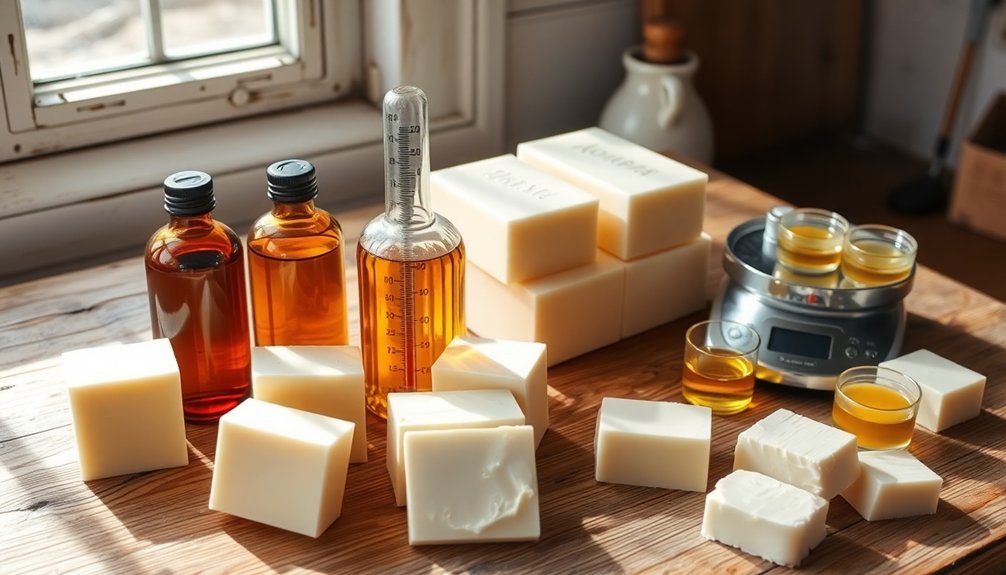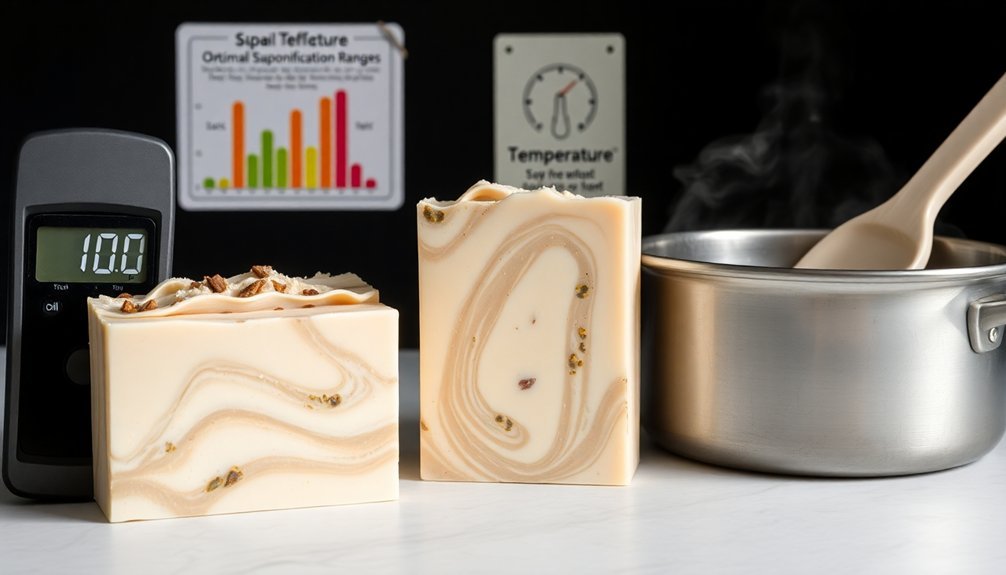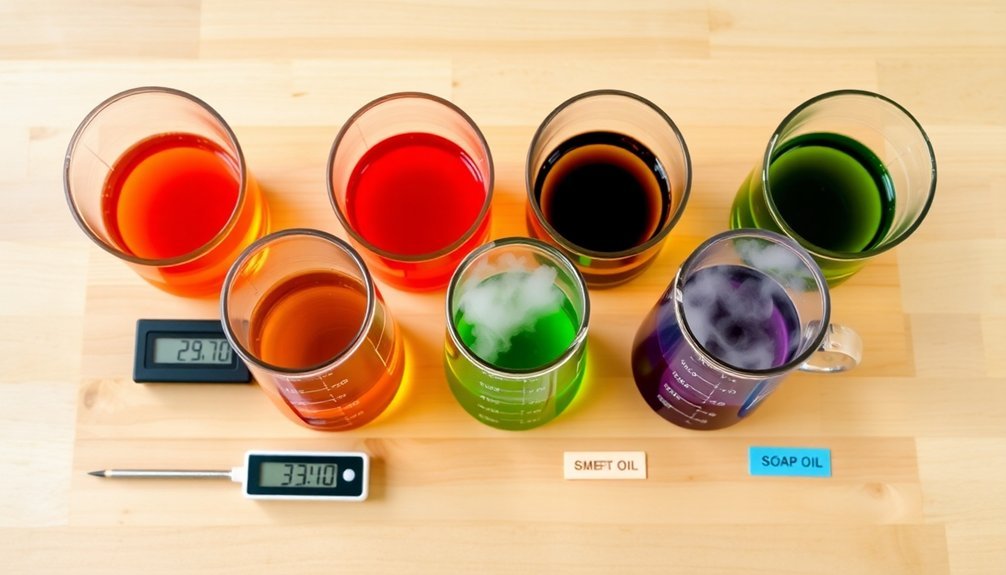For better soap making results, maintain your liquid oils at room temperature (70-80°F) to simplify the process. Use the heat transfer technique by allowing your lye solution to cool to 120-130°F before combining with solid oils. For recipes with high percentages of hard oils like cocoa butter, preheat them to 120-130°F to prevent false trace. Keeping your oil and lye temperatures within 10°F of each other guarantees consistent quality and balanced saponification in your final product.
Mastering the Room Temperature Method for Soap Oils

Three key benefits make the room temperature method a favorite among soap makers.
First, you'll eliminate heating steps by using oils naturally stable at 70-80°F, making the process beginner-friendly.
Second, you'll achieve more consistent soap quality through better control of the saponification process.
Third, you'll avoid false trace issues that plague many soap makers.
To master this technique, verify your liquid oils like olive and sunflower are at room temperature before mixing.
Monitor your lye solution carefully, aiming for 80-90°F to match your oils' temperature.
This temperature harmony creates ideal conditions for proper saponification.
The room temperature method simplifies your workflow while delivering professional results.
The Heat Transfer Technique for Balanced Saponification

While many beginners struggle with temperature management, the Heat Transfer Technique elegantly solves this problem by using your lye solution's natural heat to melt solid oils and butters.
Start by weighing your solid oils into your soap pot, then prepare your lye solution, which can reach up to 200°F. Allow the lye solution to cool to 120-130°F before pouring it directly over your solid oils. As you gently stir, you'll notice the heat effectively melting these fats, creating a homogeneous mixture ready for blending.
You'll need to monitor the melting points of each oil in your recipe to guarantee success with this method. This technique prevents false trace and overheating issues while promoting balanced saponification.
Temperature Adjustments for Different Oil Compositions

Because each soap recipe contains a unique blend of oils with different melting points, you'll need to adjust your temperature approach accordingly.
When working with hard oils like cocoa butter or palm oil, make sure they're completely melted by heating to 120-130°F. This prevents false trace and guarantees proper saponification.
For recipes with high percentages of hard oils, preheating oils is crucial before combining with your lye solution. Start by melting the hardest oils first, then add room-temperature liquid oils to balance your oil mixture's overall temperature.
Remember that liquid oils like olive or sunflower remain fluid at room temperature and don't require higher temperatures.
Always keep your oil and lye temperatures within 10°F of each other to promote smooth incorporation and consistent soap batter. This precision will greatly enhance your final product's quality.
Frequently Asked Questions
What Is the Best Temperature for Soaping?
You'll get the best results soaping between 120-130°F, as this range guarantees proper saponification. If you're using heat-sensitive additives, you can work cooler (100-110°F). Always keep your lye and oils within 10° of each other.
How Can I Improve the Quality of My Soap?
Maintain lye and oils at 120-130°F for ideal saponification. You'll get better soap by fully melting hard oils, monitoring room temperature, using heat transfer methods, and allowing 4-6 weeks curing time for harder, longer-lasting bars.
How to Get More Lather in Homemade Soap?
You'll get more lather by adding coconut oil and castor oil (5-10%) to your soap recipe. Try incorporating sugar or honey in your lye solution, and maintain proper temperatures during saponification for ideal results.
Why Is My Cold Process Soap Not Reaching Trace?
Your soap isn't reaching trace because your oils or lye may be too cool. Make certain both are 120-130°F, no more than 10° apart. Keep stirring consistently until the mixture thickens properly.
In Summary
You've now mastered three essential temperature methods for your soap making journey. By controlling your oils at room temperature, using the heat transfer technique, and adjusting for different oil compositions, you'll create more consistent, high-quality soaps. Remember, temperature isn't just a technical detail—it's a powerful tool that will transform your craft and help you achieve the perfect bar every time.





Leave a Reply